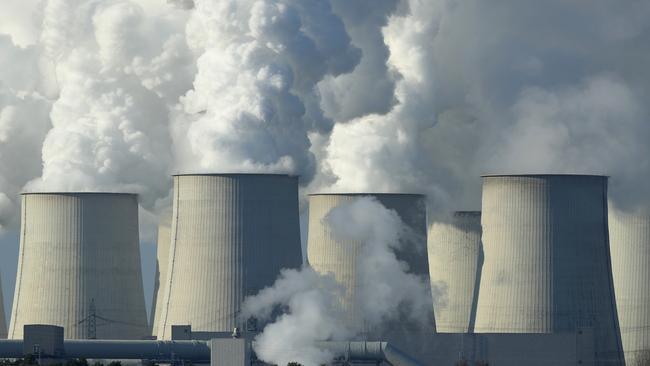Global carbon emissions rise twice as fast as ours
A report finds Australia’s carbon footprint is tiny and the world’s hunger for coal is growing.

Average global greenhouse gas emissions are rising at double the rate of Australia’s, exposing the mismatch between the “hope and reality” of meeting Paris Agreement goals, a report has found.
A major report by energy giant BP said the world was returning to coal, and without shale gas from the US and LNG exports from Australia the emissions reduction picture would be much worse.
Massive investments in renewable energy were needed but would not be enough to satisfy increasing demands for power, most notably in China and India.
BP said global emissions overall were up 2 per cent last year as the unexpected return to coal gathered pace.
The increase of 600 million tonnes of greenhouse gases from energy was greater than Australia’s total output.
Officials said the report confirmed Australia’s carbon dioxide emissions were “minuscule in absolute terms and lower (than the world average) in percentage terms as well”.
BP said last year’s global energy demand and carbon emissions from energy use had grown at its fastest rate since 2010-11.
The BP statistical review of energy is a highly respected annual report that examines trends in energy demand and use, including from renewables.
The findings mirrored those of the recent Global Carbon Project, which reported global greenhouse gas emissions had been steadily accelerating since 2016.
Increased demand for power in China, India and the US underpinned most of the increase in demand. Unusually hot and cold weather led to a spike in demand for heating and cooling, notably in North America, but BP could not say if this was a one-off due to natural variation or part of a worrying climate change trend.
The report made clear that, without shale gas in America and LNG exports to Asia, notably from Australia, greenhouse gas emissions would be much higher.
Energy Minister Angus Taylor last night reiterated Australia’s contribution to lowering global carbon emissions.
“We have clearly mapped out how we will achieve the 326 million tonnes of (carbon) abatement needed to meet our 2030 Paris target — down to the last tonne,” Mr Taylor said.
Australia’s emissions from energy, and the energy intensity of the economy, fell in 2018, but overall carbon emissions were up 0.7 per cent due largely to industrial demand from the export LNG sector.
BP chief economist Bob Dudley said the 2018 figures showed globally there was “a growing divide between societal demands for an accelerated transition to a low carbon energy system and the actual pace of progress”.
The BP report said building more renewable sources of energy could not keep pace with rising demand.
“Even if renewables are growing at truly exceptional rates, the pace of growth of power demand, particularly in developing Asia, limits the pace at which the power sector can decarbonise,” the BP report said.
Coal production (up 4.3 per cent) and consumption (up 1.4 per cent) had increased at their fastest rate for five years.
“This strength was concentrated in Asia, with India and China together accounting for the vast majority of the gains in both consumption and production,” the BP report said.
The growth in coal demand was the second consecutive year of increases following three years of falling consumption.
“As a result, the peak in global coal consumption which many had thought had occurred in 2013 now looks less certain. Another couple of years of increases close to that seen last year would take global consumption (of coal) comfortably above 2013 levels,” the BP report said.
Mr Dudley said developments detailed in the review highlighted a critical challenge facing the global power sector.
“The shift towards greater electrification can play an important part in the energy transition only if it is accompanied by a decarbonisation of the power sector,” Mr Dudley said.
Despite the continuing rapid growth in renewable energy last year, it provided only a third of the required increase in power generation, with coal providing a broadly similar contribution.
“Decarbonising the power sector while also meeting the rapidly expanding demand for power, particularly in the developing world, is perhaps the single most important challenge facing the global energy system over the next 20 years,” Mr Dudley said.
“Renewable energy has a vital role to play in meeting that challenge. But it is unlikely to be able to do so on its own.
“A variety of different technologies and fuels are likely to be required, including extensive coal-to-gas switching and the widespread deployment of carbon capture, use and storage.
“This is not a race to renewables, it is a race to reduce carbon emissions across many fronts.”




To join the conversation, please log in. Don't have an account? Register
Join the conversation, you are commenting as Logout